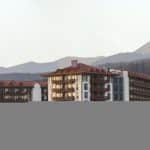Leveraging Urban Landscapes for Biodiversity
Urban landscapes present a unique opportunity for conserving biodiversity. More often than not, cities are seen as concrete jungles that do little to promote the survival of various species. However, this view is gradually changing as more urban areas are incorporating green spaces into their buildings and land development plans.
The question you might be asking is, how does real estate development fit into urban wildlife conservation? The answer lies in creating a habitat within the city that can sustain native species. You can achieve this by incorporating green roofs, vertical gardens, urban farming, and wetlands into your development projects.
Dans le meme genre : How to design real estate projects that enhance community well-being through the integration of mental health support services?
These are not just environmentally-friendly practices. They are also economically sound investments. For instance, green roofs and vertical gardens help reduce heating and cooling costs. They also help manage stormwater and create a habitat for various species, all while giving your development project a unique aesthetic appeal.
Urban farming promotes community involvement and provides locally sourced food, reducing the need for transportation and the associated carbon emissions. Wetlands, on the other hand, act as natural water filters and provide a habitat for a variety of species. They also help in flood control, considering the increasing incidents of urban flooding due to climate change.
A voir aussi : What strategies can be used to optimize the use of natural resources, such as sunlight and wind, in real estate project designs?
Google Scholar and Crossref: Tools for Research
When embarking on a journey to make real estate development more eco-friendly, it’s essential to conduct thorough research. Tools like Google Scholar and Crossref can provide a wealth of resources to guide you.
Google Scholar is an online search engine that indexes scholarly literature across a variety of publishing formats and disciplines. You can use it to find peer-reviewed papers, theses, books, conference papers, and patents. For instance, you can use Google Scholar to find literature on successful examples of urban conservation, the impact of urban development on biodiversity, and strategies for mitigating these impacts.
On the other hand, Crossref is a not-for-profit membership organization that exists to make scholarly communications better. It’s mainly known for its DOI (Digital Object Identifier) registration service. These DOIs are used to provide current and accurate links to digital content. Through Crossref, you can access various scholarly journals and research that can inform your approach to real estate development and urban conservation.
Approaching Community Involvement for Conservation Efforts
A successful urban conservation plan should not only focus on ecological aspects but also on community involvement. It’s essential to get the local community on board with your conservation efforts. They can be instrumental in maintaining and protecting these green spaces, as well as educating others about their importance.
The community can contribute by participating in tree planting exercises, maintaining community gardens, and participating in urban farming. They can also play a significant role in lobbying for policies that will protect these green spaces from being overtaken by future development projects.
Community involvement could also foster a sense of ownership and pride in these conservation areas. This sense of ownership can be a powerful tool in ensuring the long-term survival of these areas and the species that call them home.
Incorporating Native Species in Urban Landscapes
When developing green spaces in urban areas, it’s crucial to consider the types of species you are introducing. Native species are always the best option as they are well adapted to the local climate and soil conditions. They require less maintenance and are more likely to attract local wildlife.
Introducing native plants and trees into urban landscapes can create a habitat for local bird, insect, and small mammal populations. Additionally, these plants are more resistant to local pests and diseases, reducing the need for chemical treatments that could potentially harm other species.
Native species not only contribute to biodiversity but also help define the unique character of a city. They can provide an aesthetic appeal that sets your real estate development apart from others. As a result, potential buyers or renters may be more attracted to your development project, seeing it as a unique blend of modern urban living and natural beauty.
Balancing Development and Conservation
The challenge for real estate developers is to strike a balance between urban development and wildlife conservation. While cities need to grow and develop, this should not come at the expense of the biodiversity that calls these cities home.
An effective way of achieving this balance is through what’s known as ‘green infrastructure.’ Green infrastructure refers to the strategic network of natural and semi-natural areas within urban spaces. These areas are deliberately designed and managed to deliver a wide range of ecosystem services, such as water purification, air quality, space for recreation, and climate mitigation and adaptation.
Through careful planning, real estate developers can create green infrastructure that not only enhances the appeal of their properties but also contributes to urban wildlife conservation. This approach presents an exciting opportunity to build cities that are not just places for people to live, work, and play, but also spaces where wildlife can thrive.
Utilizing Google Scholar and Crossref for Biodiversity Research
In an endeavour to make real estate development eco-friendlier, in-depth research is paramount. Google Scholar and Crossref are two invaluable tools that can provide a trove of resources to guide this process.
Google Scholar, a comprehensive online search engine, offers a vast index of scholarly literature across numerous disciplines and publishing formats. It is an excellent source for peer-reviewed papers, books, conference papers, and patents. Real estate developers can utilize Google Scholar to uncover literature on successful urban conservation models, the role of urban development in biodiversity, and potential mitigation strategies.
In contrast, Crossref is a not-for-profit organization that aims to enhance scholarly communications. It is primarily recognized for its DOI (Digital Object Identifier) registration service, which provides current and accurate links to digital content. With Crossref, developers can access a variety of scholarly journals and research that can inform their approach to real estate development and urban wildlife conservation.
Fostering Community Participation in Conservation Initiatives
An effective urban conservation strategy should encompass more than just ecological considerations; it should also involve community participation. Garnering the support and active involvement of the local community is vital to the success of conservation efforts.
Community members can play an integral role in maintaining and protecting green spaces, as well as advocating for their significance. They can contribute by partaking in tree planting activities, caring for community gardens, and engaging in urban farming. Moreover, they can lobby for policies that safeguard these green spaces from future development encroachments.
Soliciting community participation can also cultivate a sense of ownership and pride in these conservation areas. This sense of ownership can be a potent deterrent against future threats and ensure the enduring survival of these areas and the species that inhabit them.
Encouraging the Use of Native Species in Urban Green Spaces
When developing green spaces in urban settings, it is paramount to consider the species being introduced. Native species are ideal candidates as they are acclimated to the local climate and soil conditions, requiring less maintenance, and are more likely to lure local wildlife.
Incorporating native plants and trees into urban landscapes can foster a habitat for local birds, insects, and small mammals. Moreover, these plants are typically more resilient against local pests and diseases – reducing the necessity for chemical treatments that could harm other species.
Native species do more than just foster biodiversity; they also help shape the unique identity of a city. Their aesthetic appeal could set your real estate development apart from others, potentially attracting potential buyers or renters who value a blend of modern urban living with natural beauty.
Striking a Balance between Development and Conservation
One of the primary challenges faced by real estate developers is finding a balance between urban development and wildlife conservation. Although cities must grow, this growth should not be at the expense of the biodiversity that these urban ecosystems house.
Green infrastructure refers to a strategic network of natural and semi-natural areas designed and managed within urban spaces. These areas provide a host of ecosystem services, such as water purification, air quality improvement, recreational space, and climate mitigation and adaptation. This approach is a viable way to strike the delicate balance between development and conservation.
Through careful planning, real estate developers can create green infrastructure that not only boosts their properties’ appeal but also contributes to urban wildlife conservation. This strategy opens the door to building cities that are not just hubs for human activity but also sanctuaries where urban wildlife can flourish.











